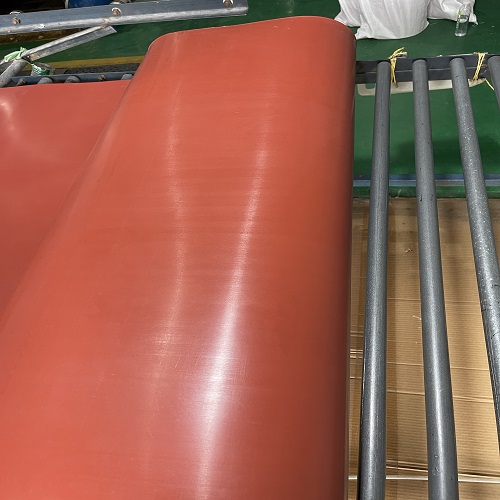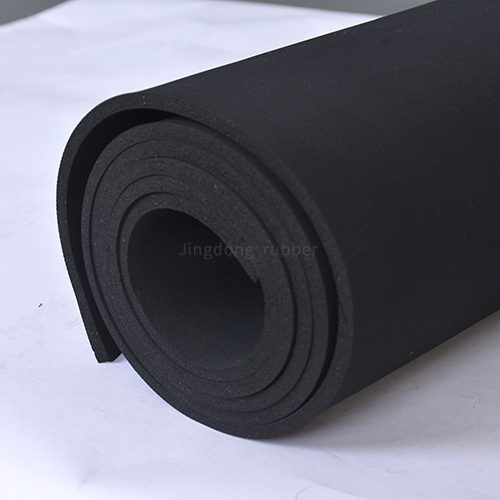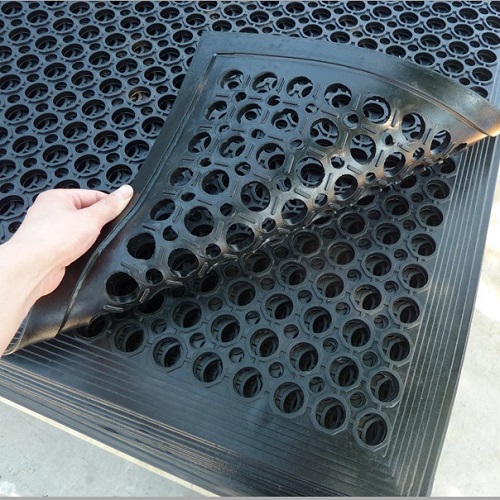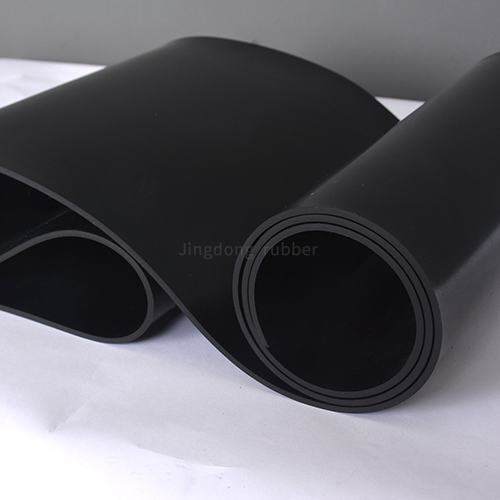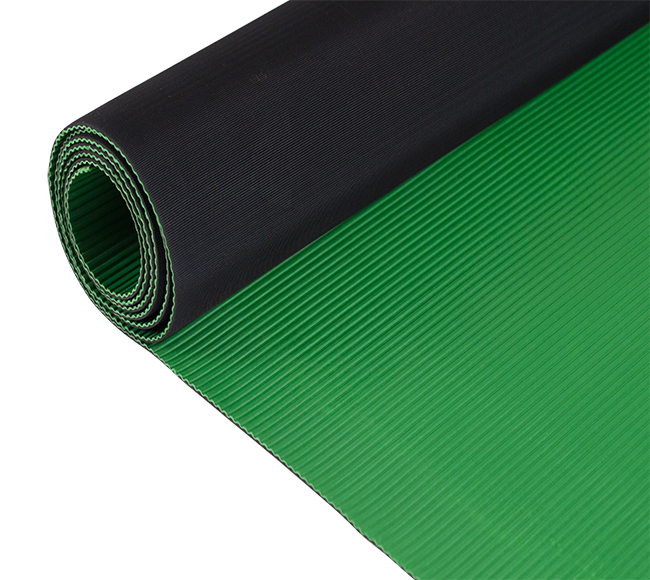Silicone Rubber Sheet
Understanding Silicone Rubber Sheet
A Silicone Rubber Sheet is a versatile, high-performance elastomeric material known for its exceptional resistance to extreme temperatures, environmental factors, and various chemicals. It is manufactured from silicone polymer, reinforced with fillers, and cured to form a solid sheet. This material is indispensable across a wide array of industries, from aerospace and automotive to food processing and medical devices, due to its reliability and durability. Its inherent properties, such as excellent electrical insulation, flexibility, and biocompatibility, make it a preferred choice for gaskets, seals, insulation, and protective pads.
Key Features and Material Properties
The effectiveness of a Silicone rubber sheet stems from its unique set of material characteristics. These properties are engineered to meet rigorous application demands.
- High-Temperature Resistance: Capable of withstanding continuous exposure from -60°C to 230°C (-76°F to 446°F), with some specialized grades tolerating even higher extremes for short periods.
- Excellent Weather and Ozone Resistance: Unlike many organic rubbers, silicone does not easily degrade, crack, or become brittle when exposed to sunlight, ozone, or fluctuating weather conditions.
- Superior Electrical Insulation: Provides high dielectric strength and volume resistivity, making it ideal for electrical insulating applications.
- Chemical Inertness: Resists water, oxidation, and many chemicals, including some acids and solvents, though compatibility should always be verified.
- Flexibility and Tear Resistance: Maintains flexibility across a wide temperature range and offers good resistance to tearing and abrasion.
- Biocompatibility: Certain grades are certified for medical and food contact, as they are non-toxic and odorless.
- Low Compression Set: Retains its original shape and sealing force after prolonged compression, ensuring long-term performance in gasket applications.
Detailed Product Specifications
Our Silicone rubber sheets are available in various grades and specifications to suit specific needs. Below is a comprehensive table outlining the standard parameters.
| Parameter / Property | Standard Value / Range | Test Method / Notes |
|---|---|---|
| Standard Thickness | 0.5mm to 6.0mm | Custom thicknesses up to 50mm available |
| Standard Hardness (Shore A) | 30, 40, 50, 60, 70, 80 | ASTM D2240 |
| Tensile Strength | 8 - 12 MPa | ASTM D412 |
| Elongation at Break | 400% - 700% | ASTM D412 |
| Tear Strength | 25 - 45 kN/m | ASTM D624 (Die B) |
| Compression Set (22 hrs @ 175°C) | < 20% | ASTM D395 (Method B) |
| Operating Temperature Range | -60°C to +230°C | Short-term peaks up to 300°C possible |
| Dielectric Strength | 18 - 25 kV/mm | ASTM D149 |
| Volume Resistivity | > 1.0 x 10^14 Ω·cm | ASTM D257 |
| Specific Gravity | 1.15 - 1.30 | ASTM D792 |
| Flame Retardancy | UL 94 HF-1, V-0 | Available on specific grades |
| Common Colors | Red, White, Black, Gray, Transparent | Custom colors available upon request |
Common Grades and Their Applications
Different formulations of Silicone rubber sheet are designed for specific environments and performance requirements.
- General Purpose (GP) Grade: The most common type, offering a balanced set of properties for general sealing, gasketing, and insulation in industrial settings.
- High-Temperature (HT) Grade: Formulated with enhanced thermal stability for prolonged use in applications exceeding 230°C, such as in engine compartments and heating systems.
- Food & Medical Grade (Platinum Cured): Made with high-purity, platinum-based catalysts. They are non-toxic, odorless, and comply with FDA CFR 21.177.2600 and USP Class VI standards. Used in food processing equipment, medical devices, and pharmaceutical applications.
- Flame Retardant (FR) Grade: Contains additives that inhibit combustion, meeting standards like UL 94 V-0. Essential for electronics, transportation, and construction where fire safety is critical.
- Electrically Conductive Grade: Filled with conductive carbon or metal particles to provide shielding against Electromagnetic Interference (EMI) and Radio Frequency Interference (RFI).
- Sponge/Foam Grade: A closed-cell foam sheet offering superior compressibility and sealing for uneven surfaces, along with excellent thermal and acoustic insulation.
Frequently Asked Questions (FAQ)
What is the maximum temperature a silicone rubber sheet can handle?
Standard silicone rubber sheets are rated for continuous service between -60°C and 230°C (-76°F to 446°F). Special high-temperature grades can withstand short-term exposure up to 300°C (572°F). Prolonged exposure to temperatures at the upper limit may cause gradual hardening and loss of elongation over time.
Can silicone rubber sheets be used for outdoor applications?
Yes, silicone rubber is renowned for its excellent resistance to weathering, ozone, UV radiation, and extreme temperatures. It does not readily crack or degrade when exposed to the elements, making it an ideal material for outdoor seals, gaskets, and protective covers.
Are there silicone rubber sheets safe for food contact?
Absolutely. Platinum-cured, food-grade silicone rubber sheets are specifically manufactured to be non-toxic, odorless, and tasteless. They comply with stringent regulations such as FDA CFR 21.177.2600 and are commonly used in food processing machinery, baking mats, and kitchen equipment.
How do I choose the right hardness (durometer) for my application?
Hardness, measured on the Shore A scale, dictates the material's softness or firmness. For delicate surfaces or complex shapes requiring conformability, a softer sheet (e.g., Shore A 30-50) is better. For heavy-duty gaskets or applications requiring structural support, a firmer sheet (e.g., Shore A 60-80) is recommended. Consulting with a technical expert is advised for critical applications.
What is the difference between solid and sponge silicone rubber sheets?
Solid silicone sheets are dense and non-porous, offering superior tear strength, abrasion resistance, and a gas-tight seal. Sponge (or foam) silicone sheets are compressible, closed-cell materials that provide excellent sealing on irregular surfaces and act as effective thermal and acoustic insulators. The choice depends on the need for compressibility versus structural integrity.
Can silicone rubber be customized in terms of color and size?
Yes, we offer extensive customization options. Sheets can be produced in a wide range of standard and custom colors. They can also be die-cut, punched, or slit to specific dimensions and shapes to meet your exact design requirements.
How does silicone rubber compare to EPDM or Neoprene?
Silicone has a much wider service temperature range than EPDM or Neoprene. It is superior in high-temperature applications and offers better ozone and UV resistance. However, EPDM may have better resistance to steam and some polar chemicals, while Neoprene offers good resistance to oils and fuels. The selection depends on the specific environmental conditions of the application.
What cleaning agents are safe to use on silicone rubber sheets?
For general cleaning, a mild soap and water solution is sufficient. Isopropyl alcohol can be used for disinfection. Avoid using strong acids, bases, ketones (like acetone), and concentrated solvents, as they can swell or degrade the silicone material over time.
- View as
